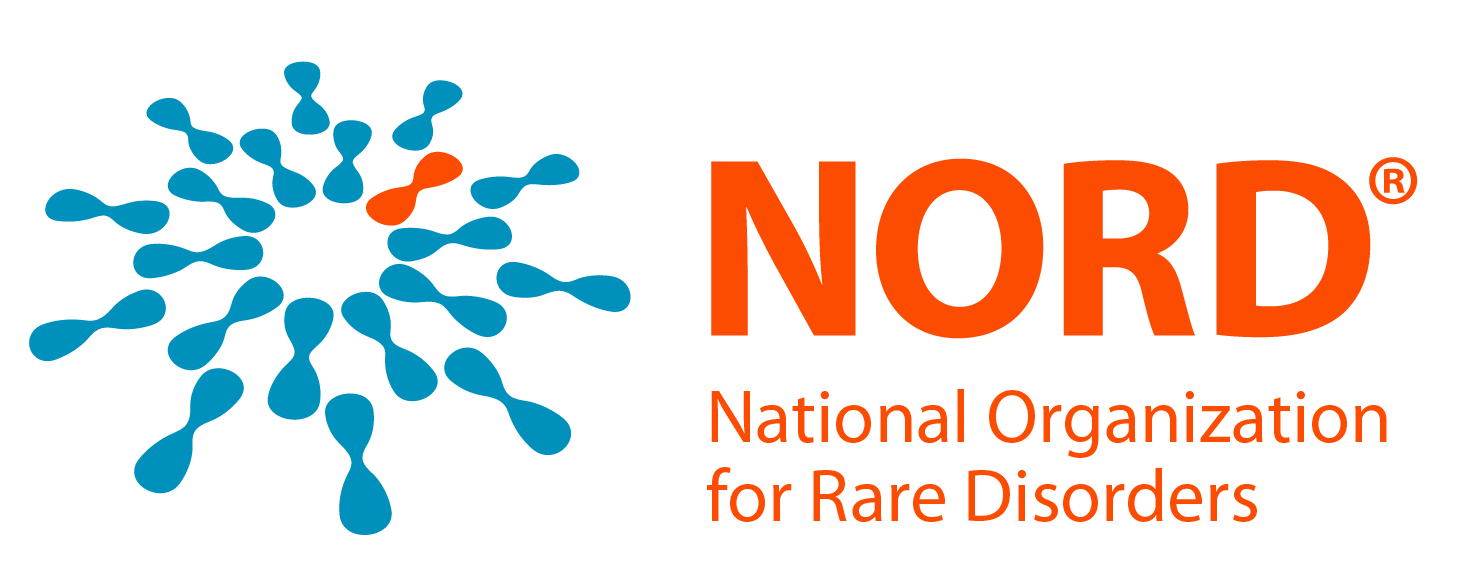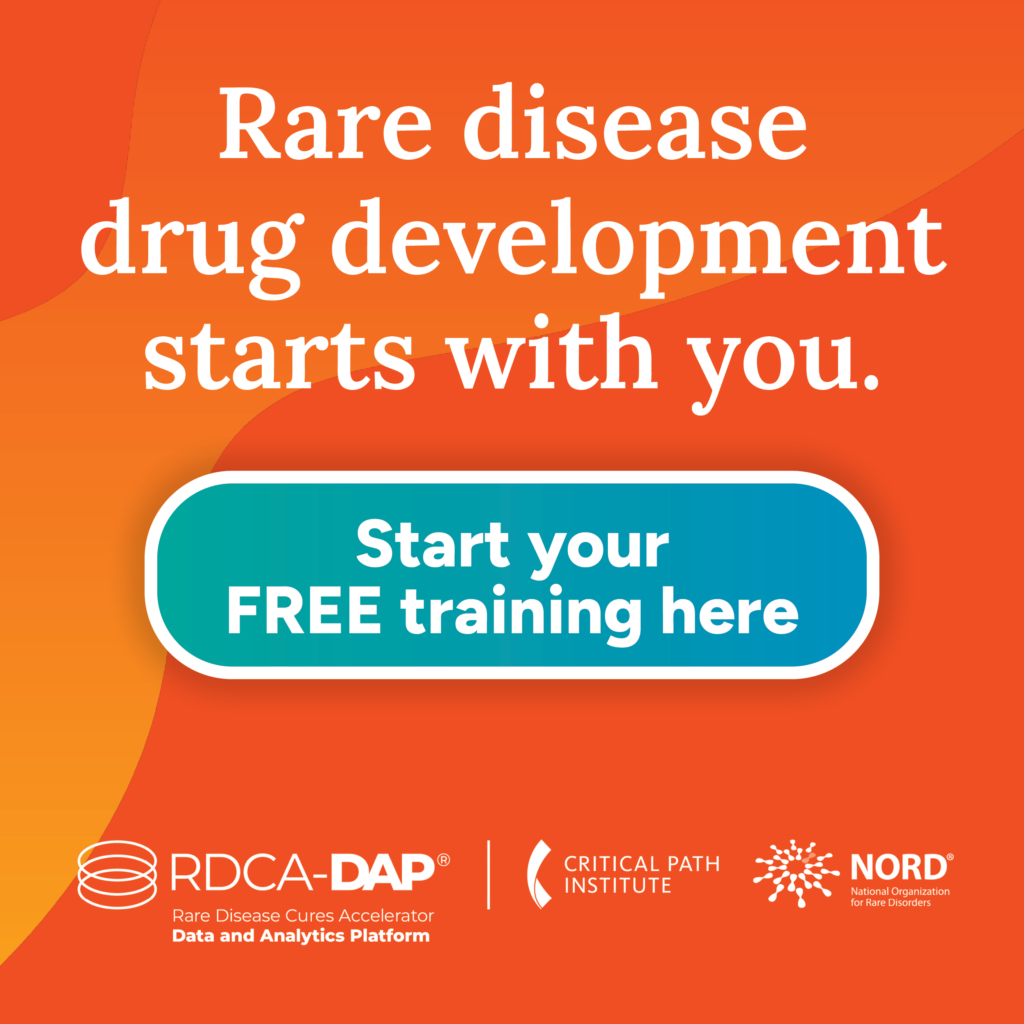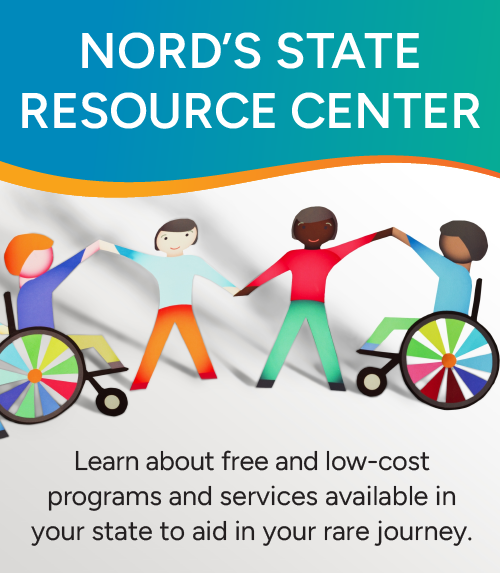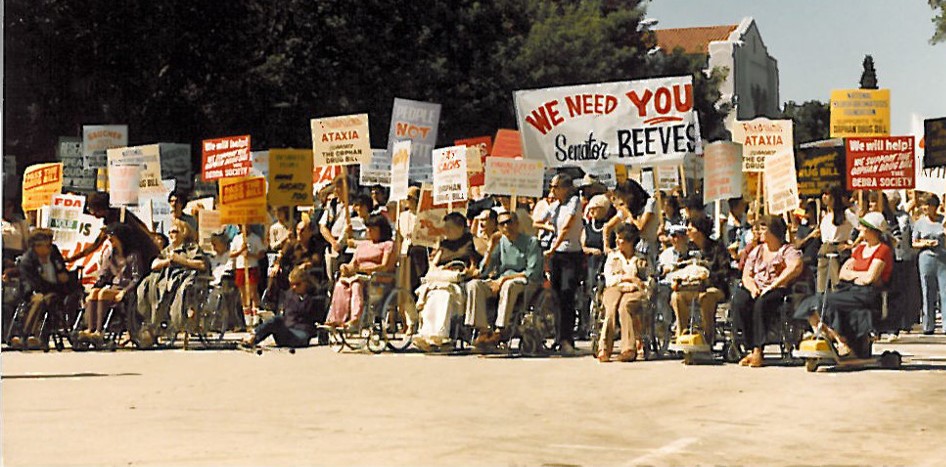2018 is a big year for the rare disease community – NORD is celebrating its 35th anniversary. For the past 35 years, NORD has taken pride in being the rare disease community’s biggest advocate. Our policy, research and other efforts have played a significant role over the years, advocating for what matters most and making sure patients have a voice. In this special anniversary blog series, we are highlighting our decades of service to those impacted by rare diseases.
Throughout the year, we’ll be telling our story… and we hope you will consider telling yours. Do you have a story you would like to share about how NORD has helped and what NORD means to you? Tell us – send us a note using this page on our website: https://rarediseases.org/shareyourstory/. Your story may be chosen to appear on our website or as part of our special anniversary celebration.
Editor’s Note: The story of NORD’s founding was previously published in honor of the 30th anniversary and can be read in its entirety at https://www.dovepress.com/a-30-year-retrospective-national-organization-for-rare-disorders-the-o-peer-reviewed-fulltext-article-ODRR. Passages from the previously published article are included below.
How it began
The year was 1983. Ronald Reagan was President, gasoline cost $1.13 per gallon, IBM had released a computer weighing 32 pounds, and the average price of a new home in the United States was $89,900.
In the realm of healthcare, work to begin sequencing the human genome was still a few years away. For people concerned about rare diseases, their lives were about to change, for two monumental events were happening – not in a research lab or doctor’s office – but in Washington, D.C., and in a small town in Connecticut about 70 miles north of New York City.
On January 4, 1983, President Ronald Reagan signed the Orphan Drug Act into law. As a result of this legislation, previously neglected patients had real hope that safe and effective therapies would become their reality.
Four months later, on May 4, 1983, the National Organization for Rare Disorders (NORD) was formally established in Connecticut, creating a place for the 30 million Americans with rare diseases to call home and connect with others.
What had led up to these two pivotal events?
Patients in the spotlight
In the late 1970s and early 1980s, it was becoming increasingly clear that many Americans dealing with illness were being overlooked by medical advancements. One reason for this neglect was the small size of certain patient populations for conditions like cystic fibrosis, muscular dystrophy, and leukemia. Pharmaceutical companies, focused on blockbuster drugs, could not expect to recover the investment required to develop treatments for diseases affecting only a few. Hence, these diseases came to be known as “orphan” diseases.
One of the original voices speaking out about this issue was a task force whose members included staff of the Food & Drug Administration (FDA) and National Institutes of Health (NIH) who felt that the plight of these patients and their families was a public health issue. Chaired by FDA’s Dr. Marion Finkel, the task force submitted a report to the Secretary of Health, Education and Welfare in 1979, entitled “Significant Drugs of Limited Commercial Value”, calling for this issue to be addressed.
Members of Congress, from both major parties, also began to focus on this topic, often after hearing from constituents who were affected by rare diseases. Representative Henry Waxman of California, Senator Orrin Hatch of Utah, and Senator Nancy Kassebaum of Kansas provided particular leadership. Waxman, then chair of the Subcommittee on Health and the Environment, of the House Energy and Commerce Committee, was so moved by the situation that he ultimately decided to hold hearings to gather information on “the orphan drug problem.”
Rare disease patient advocates and patient organization leaders played a significant role. Together, they formed an ad hoc committee whose leaders included Abbey Meyers, NORD’s eventual founder who at the time was affiliated with the Tourette Syndrome Foundation because she had children with the syndrome.
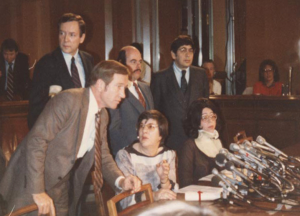 Meyers and others representing the patient community spoke at the hearings. The patient representatives also included some physicians, notably Jess Thoene of the University of Michigan and Melvin Van Woert of Mount Sinai Hospital in New York, who were treating patients with rare diseases and were supportive of the fledgling patient advocacy movement. Most in the group were new to the world of politics and started out not knowing how to advocate effectively.
Meyers and others representing the patient community spoke at the hearings. The patient representatives also included some physicians, notably Jess Thoene of the University of Michigan and Melvin Van Woert of Mount Sinai Hospital in New York, who were treating patients with rare diseases and were supportive of the fledgling patient advocacy movement. Most in the group were new to the world of politics and started out not knowing how to advocate effectively.
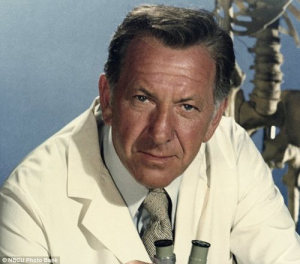 During this time, Meyers received a call from Hollywood writer and producer Maurice Klugman, who suffered from a rare cancer and was the brother of actor Jack Klugman, star of the then-popular TV series, “Quincy M.E.” They wanted their show to address substantive topics. After speaking with Meyers to learn about the issue and the patient perspective, they wrote two episodes of “Quincy M.E.” about the plight of people with rare diseases with no treatment.
During this time, Meyers received a call from Hollywood writer and producer Maurice Klugman, who suffered from a rare cancer and was the brother of actor Jack Klugman, star of the then-popular TV series, “Quincy M.E.” They wanted their show to address substantive topics. After speaking with Meyers to learn about the issue and the patient perspective, they wrote two episodes of “Quincy M.E.” about the plight of people with rare diseases with no treatment.
When the first episode aired, it sparked a firestorm of interest, particularly from individuals and families affected by rare diseases. Jack Klugman received hundreds of letters, which he forwarded to Meyers. Those letters led to a mailing list for the ad hoc coalition that ultimately became NORD. Jack Klugman was also invited by Representative Waxman to testify before the subcommittee.
Based on the hearings and research by his staff, Waxman eventually wrote a bill that became the Orphan Drug Act, which would provide financial and regulatory incentives to pharmaceutical companies to make the production of orphan drugs more cost-effective.
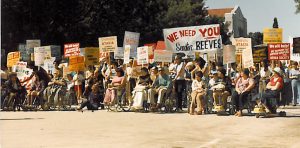 At one point, when the bill appeared to be stalled in Congress, Klugman devoted a second episode of “Quincy M.E.” to the topic. In one pivotal scene, 500 extras – all real rare disease patients and their caregivers who had been organized by Meyers and others in the ad hoc patient coalition – staged a march on Washington.
At one point, when the bill appeared to be stalled in Congress, Klugman devoted a second episode of “Quincy M.E.” to the topic. In one pivotal scene, 500 extras – all real rare disease patients and their caregivers who had been organized by Meyers and others in the ad hoc patient coalition – staged a march on Washington.
Ultimately, through these collaborative efforts, the Orphan Drug Act was approved by the House of Representatives on December 14, 1982, and three days later, by the Senate. President Ronald Reagan signed the bill on January 4, 1983. At one point over the December holidays, when it appeared that the President might not sign the bill, the patient advocates placed a full-page advertisement in the Los Angeles Times (because the President was at his home in California at the time) urging him to sign the bill.
Patients formalized their ad hoc coalition
Shortly after the Orphan Drug Act was enacted, the members of the patient coalition decided to formalize as an umbrella organization representing all people with rare diseases, called the National Organization for Rare Disorders (NORD). Meyers was asked to serve as president. The incorporation of NORD became official on May 4, 1983. Jack Klugman served as NORD’s honorary chairman for the first few years. Rare disease medical experts who had supported the patient advocates during the Congressional hearings, including Drs. Thoene and Van Woert, provided key leadership during the formation of NORD and continued as medical advisers for many years.
Before NORD, no organization had existed to provide a unified voice for the needs of the rare disease community. Rarely mentioned in public, rare diseases had been steeped in fear and denial. Patients often had nowhere to turn for resources or to connect with others, and doctors knew very little about rare diseases. NORD’s first slogan, “…out of the darkness, into the light,” highlighted this reality and its efforts to carve out a space for rare diseases and raise awareness.
At the time when NORD was founded, there were relatively few disease-specific patient organizations in existence. NORD’s original member organizations included groups representing, among others, the Marfan syndrome, cystinosis, and epidermolysis bullosa patient communities. Today, NORD represents more than 270 patient member organizations. Over the years, NORD has been fortunate to work alongside some of the most incredible patient groups—some large in size, and others that are small, true “kitchen table” operations run by parents of children with rare diseases—and all of whom work tirelessly to make a positive impact for their patient communities.
The early years
Throughout its first decade, NORD’s continued advocacy and collaboration with FDA and NIH helped to facilitate more progress for rare disease patients.
Recognizing that more was needed than industry incentives, in 1985 Congress established a National Commission on Orphan Diseases under the Department of Health and Human Services. Led by Dr. Stephen Groft, the Commission issued its report in 1989 that documented a continuing need for a national effort to address issues such as delay in obtaining an accurate diagnosis, the financial impact of having a rare disease on patients and their families, and lack of access to therapies. This ultimately led to the establishment of the Office of Rare Diseases Research at NIH, which NORD advocated for, that served to identify, stimulate, coordinate and support research to respond to the needs of patients with rare diseases.
The 1980s also saw the launch of FDA’s Office of Orphan Product Development, a division dedicated to advancing the evaluation and development of therapeutics for the diagnosis and treatment of rare diseases. By 1990, FDA had designated 370 products for orphan status, and of these 49 were approved for orphan indications. By comparison, from 1967 to 1983, only 34 drugs approved were for rare diseases, and only 10 of the products brought to market by the pharmaceutical industry in the decade before 1983 would have qualified as orphan drugs under today’s Orphan Drug Act.
Despite this progress, much work remained to be done, considering how many suffered from rare disorders. But the founding of NORD and the enactment of Orphan Drug Act finally showed that rare diseases patients would no longer be forgotten.
Expanding our impact to help patients
NORD started as a clearinghouse for information on rare disorders. Within a few years, NORD began to expand its reach as an organization, working even harder to help patients fight back against the challenges of rare diseases.
In 1987, NORD established the first-ever patient assistance program specifically for medical treatments at the request of a judge in a situation involving a drug shortage. Since then, NORD has provided assistance programs to help patients obtain life-saving or life-sustaining medication they could not otherwise afford.
Also in 1987, NORD hosted its first awards program which, in the spirit of NORD’s founding, brought together representatives from the entire community to celebrate progress and renew a shared commitment to helping people with rare diseases. NORD’s awards program has continued each year since, and it remains one of the most anticipated events in the rare diseases community annually. A special 35th anniversary celebration presenting the Rare Impact Awards will take place in Washington, D.C. on May 17 at the Andrew W. Mellon Auditorium.
In 1989, NORD launched its research grant program to provide seed funding to academic scientists for translational or clinical studies related to the development of potential new diagnostics or treatments for rare disease. Over the years, NORD grants have led to the development of two FDA-approved treatments and numerous journal articles. More than 150 grants have been awarded nearing $7 million in approved funding to date.
Stay tuned for the next post in NORD’s 35th Anniversary series.
